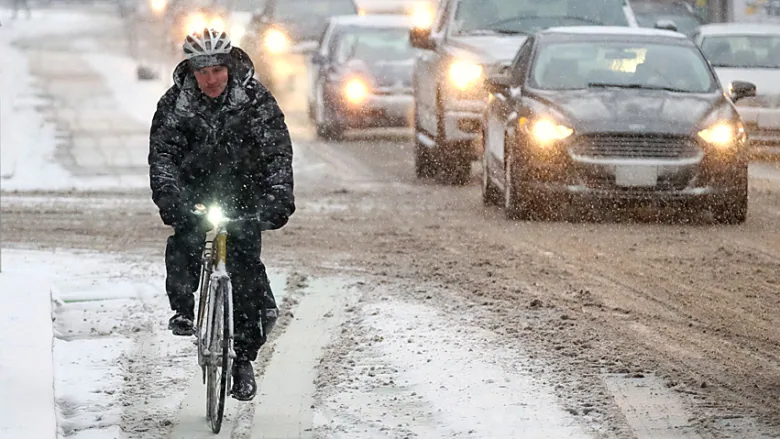Actively Commuting in the Winter
Published Tuesday, January 31, 2023

By Caitlund Davidson, Health Promotion and Communications Planner
During the winter, the additional time it takes to warm up your vehicle in the morning and drive to work or school, could be equal to the amount of time it takes to actively commute. Active commuting is not just a summer activity. Taking public transportation, biking, walking or running can still be done in cold weather. It not only can help to reduce your carbon footprint and save you money on gas, but can be good for your physical and mental health.
Actively commuting can increase the amount of active move minutes you achieve each a day. In turn, increased physical activity can improve your cardiovascular health, muscle and bone strength, and reduce your overall fatigue. Actively commuting can also support your mental health by boosting your mood and fostering a feeling of accomplishment.
Despite the benefits associated with active commuting, the colder weather and shorter daylight hours can deter many from hopping on their bikes first thing in the morning. However, cycling in the winter is not as difficult as one may think. People often assume that you will freeze when riding a bike in winter conditions, but on the contrary, you are more likely to overheat if wearing appropriate clothing. Additionally, biking in the winter does not require you to have a specialized bike. Any type of bike can be suitable for the winter, however, it is recommended that you upgrade your tires to ones that have good tread or are studded. This can help grip the ice and snow and prevent your tires from hardening in colder temperatures.
Throughout the month of June, people living in Thunder Bay and the surrounding district actively commuted a total of 20,496 kilometres and reduced greenhouse gas emissions by 4,195 kilograms. Actively commuting is anticipated to be significantly less this winter compared to the summer.
Try actively commuting and keep these tips from Ashley Priem, Program Director at EcoSuperior, in mind if you try cycling:
-
Your winter cycling clothes should consist of a series of layers and it would be best if you started your ride feeling cool so that when you generate heat while pedaling, you don't get too hot.
-
Some bikes are more suited to winter riding than others. A mountain bike with chunky tires will have more grip than a road bike. For even more grip and security, you may want to ride a fat bike, which is great for riding in the snow. To save money on new tires, you can lower your current tires pressure. This will give you more traction on slippery surfaces. Don't lower the tire pressure too much, as you will be more prone to punctures unless you go tubeless.
-
Fit your bike with a good set of lights, white on the front and red on the back.
-
Make sure you clean the bike, chain, gears, brakes, and wheel rims on a regular basis, especially after a ride in wet conditions. Be sure to lube the chain and gears on a more frequent basis as well.
Learn more about cycling in Thunder Bay by visiting https://bit.ly/CycleTBay.